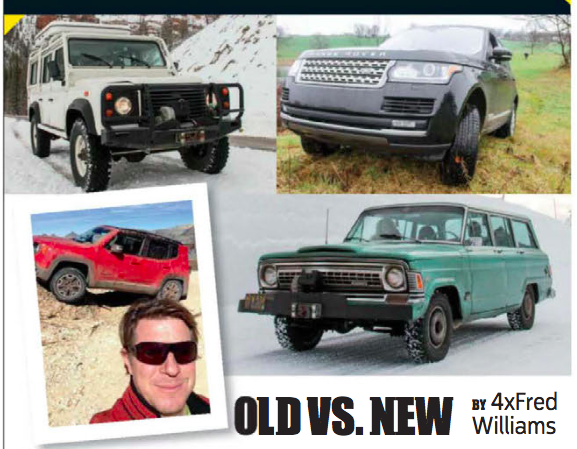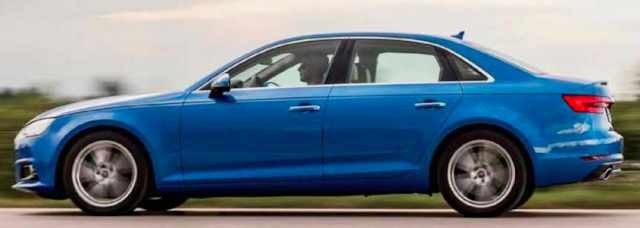Welcome to Auto Business News-Sweden’s Christopher Björåsen has developed a habit for E28s that borders on the obsessive. This Hartge tribute throws into focus just how easy it is to get carried away with trying to find matching period upgrades...
There’s a line between a homage and a poor imitation, and it’s not always a thin one. If you’ve got, say, a bone-stock E36 320i and you replace the badges with those from an M3 and maybe slap on a set of wheels from a better-spec’d model, that’s not going to fool anyone. It’s just a bit embarrassing, claiming it’s something it’s not. If, however, you spent some time collecting a variety of appropriate parts, building the thing up piece by piece, you could be onto something – M3 wheels with the appropriate brakes behind them, the suspension, the body addenda of the superior variant, the interior accoutrements and embellishments, the hallowed drivetrain... you’d be incrementally building something genuinely interesting there. It’s never going to be a real M3, but with care, patience and dedication, you can make a fairly close approximation. That’s a decent homage, a tribute, a job done well

So it is with the E28 5 Series you see here. It’s not a genuine Hartge E28, but its owner, Christopher Björåsen, is slowly but surely ticking off the details to make it a thoroughly respectable homage. The idea he’s shooting for here is a sort of modern interpretation of the old Hartge H5S; the legendary aftermarket tuner (who, incidentally, was approved as a manufacturer in its own right in 1985, a couple of years before Chris’s own 535i left the factory) raised the 3.4-litre M30’s power output from 218hp to 240hp, then tweaked various elements of the car to suit. The suspension was uprated and necessarily lowered and some spangly wheels appeared. Front and rear spoilers were bolted on – naturally, it was the Eighties – and a lesser H5 variant was offered based on the 528i powertrain. Most importantly of all, it had in- your-face side-stripes. Again, Eighties. All of this forms a neat picture of what Chris sought to emulate and, given the inherently retro nature of the concept, we can assume that it’s an aspiration that’s been simmering away for some time, right? “Er... no, not really,” he says, cutting us down in short order. “The first time I saw an E28, I thought it was really ugly. I was about 12 years old, I was at a friend’s house, and his grandparents came down the street in a stock beige 5 Series. I thought it was horrible. I couldn’t think why anyone would choose to buy such an ugly car.”
Well, that’s a pretty damning analysis. But time makes fools of us all and, as you’ve no doubt guessed, Chris’s sensibilities toward shark-nosed Bavarian executive saloons has mellowed somewhat over the decades.
“A few years after that, when I was 18 and working toward getting my driving licence, I was at a local hangout on a Friday night when this maroon E28 with the M package and 17” Contour wheels came drifting around corner with its straight-six screaming... from that moment I flip- flopped, and decided that I had to have one!”
Now we’re getting somewhere. If only that elderly couple had been a bit more aggressive in their beige runabout, maybe the ball could have got rolling a little bit earlier! But heigh-ho, here we are, and things seem to have turned out all right in the end. As luck would have it, a friend of a friend happened to have an ’83 528i for sale at this time, so with a fresh licence in hand, Chris pulled the trigger on a new era of shark- fancying. Which is rather a lot cooler than the average first car. “From the first time I drove it I was hooked!” he enthuses, revelling in the heady stew of rich, tasty memories. “I did a few small mods on it – lowering springs, 17” throwing stars and so on – but after a year I managed to slide it into a lamp post and totally trashed the front end. So that was the end of that one.”
But by this point, of course, the passion was set in stone. Grown-up Chris was thumbing his nose at his 12-year-old self, the enthusiasm for E28s growing ever stronger by the day. That early foray is something he describes affectionately but realistically as “just my first E28”, and there have been an impressive seven more since, ranging from daily-driven 518 up to an M535i. He’s really been ticking the boxes across the model range, keen to try every flavour. This is beginning to border on obsession.
The story of this suave Hartge-alike begins with its predecessor, the aforementioned M535i. “That was a Lachssilber example that I modded quite a lot,” Chris recalls. “I experimented with all kinds of different springs and dampers to get it low as well as quick, but one day my eye was caught by a 535i on a Swedish E28 forum. The owner had just bought a 635CSi and was thinking of selling the saloon, so I called him straight away to go and have a look at it! Since I already had a 535 in good condition and this one looked like it’d cost a bit much, I told myself that I was only going to take a look and I wouldn’t be coming home with it. But, boy, was I wrong! The thing was in mint condition. It was love at first sight.”
The car, it turned out, had been sold new in Nuremburg in 1987, and had stayed with the same owner right up until 2007, covering just 82,000km. At that point it found its way over to a new Swedish owner, who kept it for a couple of years before passing it onto the keeper who ended up selling it to Chris. It’s a pretty rare thing to be able to trace back the entire ownership of a car of this age, so that almost makes the purchase worth it in itself. And the fact that the fella who sold it to our plucky hero had thrown a lot of cash at the chassis was the real clincher. “It had E34 M5 brakes and E28 M5 anti-roll bars, as well as new arms and bushes,” Chris says, which made it seem pretty attractive. “He’d started the Hartge theme, too, although when I bought it a lot of things were stock 535i the wheels, the dampers and so on. So the first thing I did was to throw on a set of coilovers.” The units in question are super- adjustable XYZ Super Sport items, something the manufacturer describes as ‘suitable for daily use and weekend racing’ perfect for Chris. They also help the car get nice and low, taking the original old-school Hartge stance and refracting it through a modern filter. These new lows were swiftly augmented by a set of Hartge Type C three- piece splits that were already waiting in the garage, destined for the old M535i but suddenly feeling far more appropriate for the new project. And from this point on, the car became a sort of cross between a jigsaw puzzle and a retro treasure hunt.
“With the Hartge decor on the exterior and the wheels to match, I started hunting for the other period parts to complete the picture,” he explains, casually tossing into the conversation a concept that actually represents months of tireless and exhausting scavenging across the internet and beyond. Inside the car, complementing the leather dash and nifty heated leather M-Sport seats, you’ll find a Hartge steering wheel, gear knob, gauge cluster with unique rev counter, and the sought-after finned dead pedal on the floor. It’s all as Herbert Hartge would surely have intended in there, and the exterior was shaping up rather neatly, too. Working alongside the stripes ’n’ rims combo are an M5 front spoiler and a BBS spoiler on the bootlid, and it’s worth noting as well how utterly, mind-bogglingly clean the whole thing is. It’s a proper period-tuned showcase.
Now, as previously alluded to, Hartge’s own approach to tweaking the M30 motor was to liberate an extra 30hp+ by fiddling with the fuelling and ignition, as well as reworking the cylinder head and fitting a redesigned exhaust manifold. This isn’t the route that Chris has gone down, although his straight-six is rather feistier than you might expect. “I bought a genuine Hartge exhaust manifold from a guy in Montenegro, and I made a custom 2.5” stainless steel exhaust to fit,” says Chris, eager to assure us that his classic homage isn’t all mouth and no trousers. He’s certainly added some bark to it. “Because I run so low, and the oil pan on the M30 sits so low anyway, I had to modify it to stop it from hitting the ground all the time,” he continues. “It now sits 28mm higher from the road. I’ve had too many close calls, so this just seemed to make sense!” Indeed it does – particularly when you factor in that this car isn’t just hard- driven but daily driven, too.
“The reaction to the car has been great. E28 fans around the world really seem to love it,” Chris enthuses. “I even had Stanceworks’ Mike Burroughs getting in touch to talk about it. But I’m not finished yet, far from it... I’m still always on the lookout for period-correct Hartge parts for the car; I’ve already picked up a Hartge rear wing, and I’d really like a matching valve cover, too.” He seems keenly aware of the performance-oriented nature of the original H5S as well, and he’s certainly not done with the engine. New cams are on the cards, along with some head porting and a fresh management system, which should pull everything beyond that tweaked 1980s power figure. There’s talk of rebuilding the wheels, too, to provide a bit more dish from wider lips. Again, it’s all about reworking that classic tuning for the modern era. Subtle, but devastatingly effective.
So no, this isn’t a genuine Hartge H5S. But with every day that passes, it gets closer to being a faithful replica, with a few fun tweaks to contemporise it for modern use and a new-wave audience. This is no disrespectful parody. This is a loving and aspirational homage, and it just keeps on getting better






